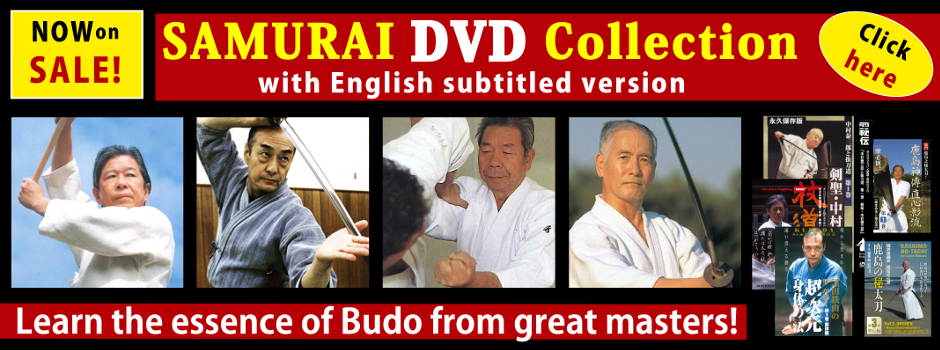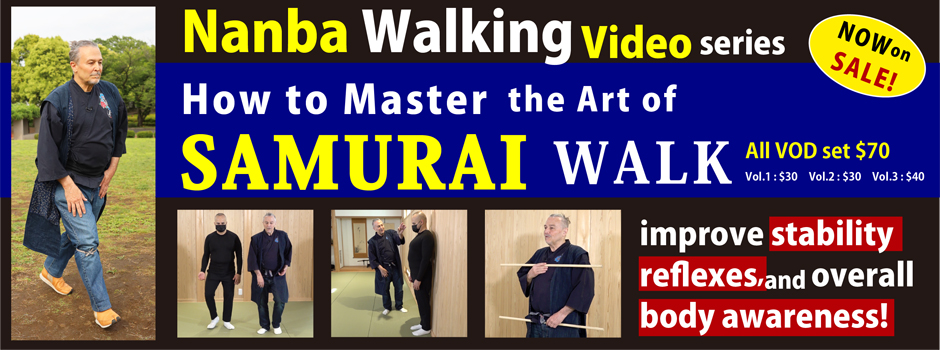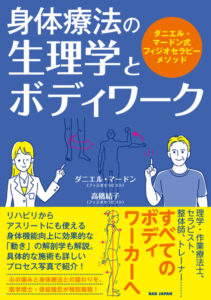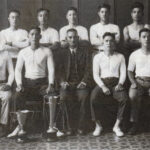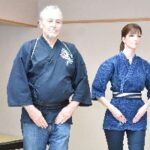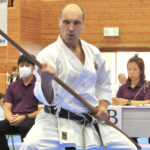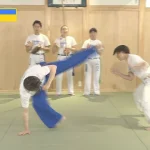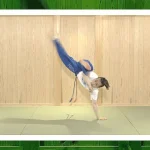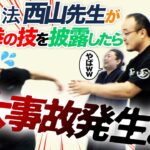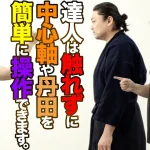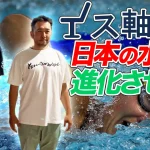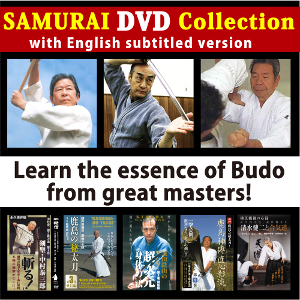【Exploring the spirit of the Ryukyu】Series 3 (HIDEN 07/2023)「Andy Sloane SENSEI」
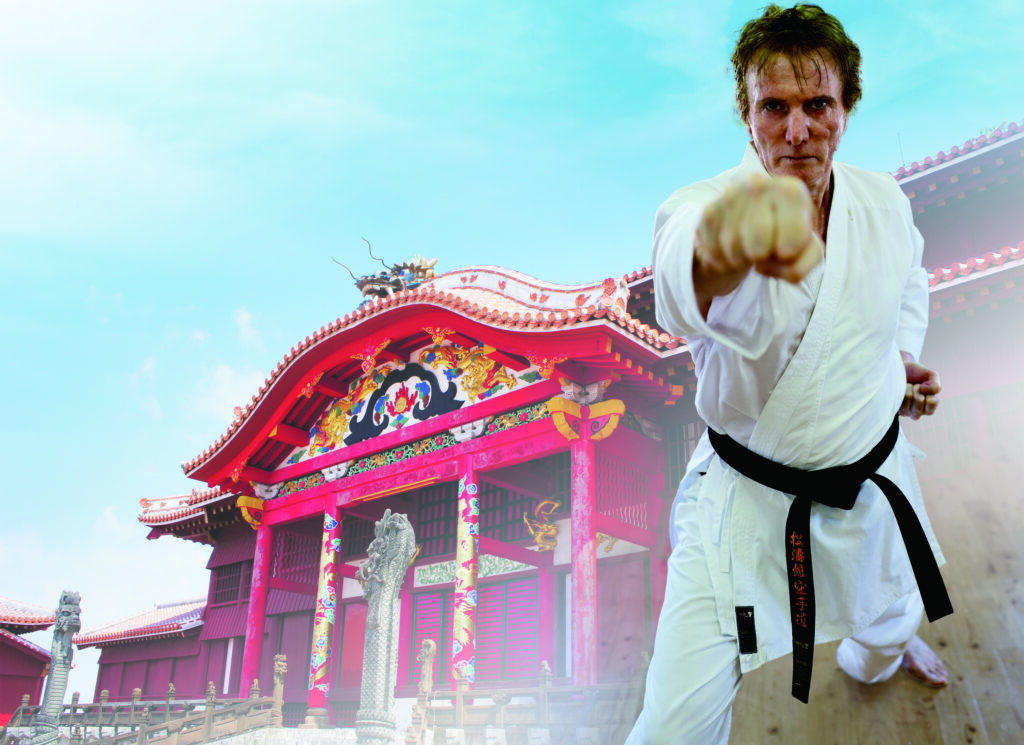
A French saying claims that if you know history, you know geography… Geopolitics proves us that the opposite is also true and that geography and history form a couple that illustrates the Karate saga well.
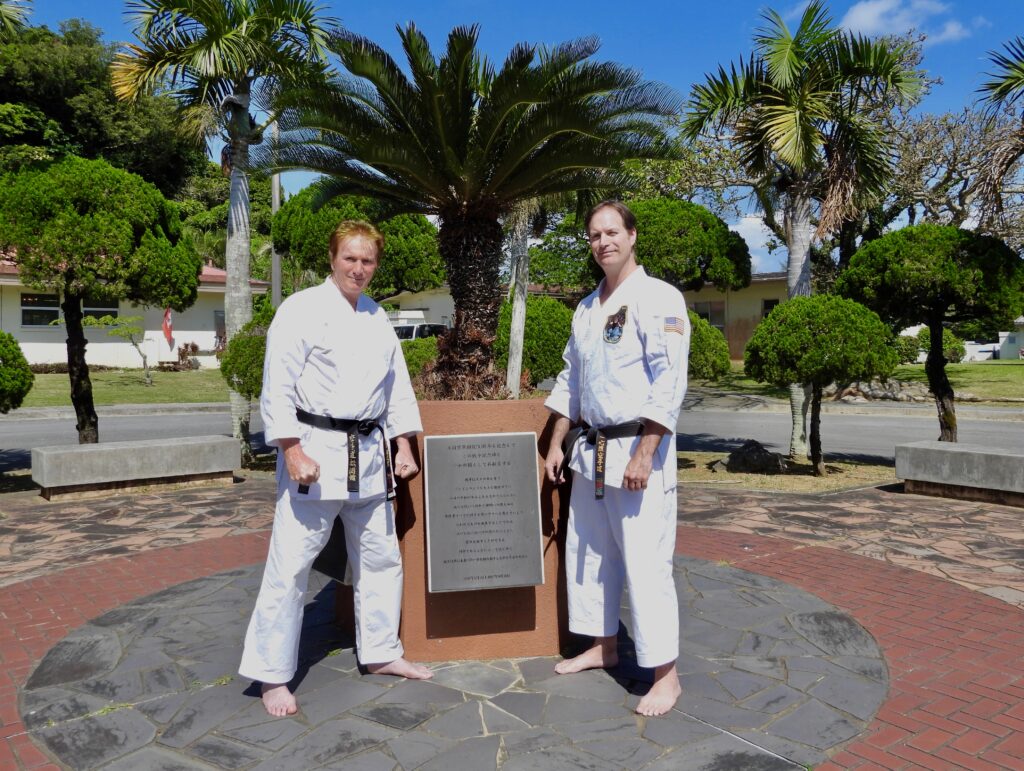
Daniel & Andy standing at the memorial in the “Peace-Garden”.
The huge turn-over of American troops that has characterized Okinawa since 1945 to the present day, has made it possible to introduce Karate to millions of people around the world throughout the last 78 years. It is certainly not wrong to say that if it weren’t for the Americans, Karate would probably never have achieved such popularity. It is also an American of Chinese origin who made Karate famous with a few movies by becoming a legend of Karate while he was trying to promote Kung-Fu.
Although the American occupation concerned all the Prefectures of Japan from 1945 to 1952, it is especially in Okinawa that the G.I. could discover and develop Karate. Okinawa has become a U.S. Territory until 1972. This explains the large number of American experts as well as the popularity of this form of Karate which is firmly established across the Atlantic. Its technical and philosophical differences from the Japanese Karate I had learned in France gave me a big surprise when I moved to America! I was discovering a “standing” Karate, with open hands and fluid like Kung-Fu. No shouting of “Ossu”, but colorful “Do -Gi”! I mistakenly thought it was an Americanization of Karate, but the Dojo were working with Okinawan traditions. Thanks also to history, for making a better understanding of the fact that some American disciples, have reached ranks equal (or sometimes superior) to those of the direct descendants of their Okinawan Masters. Some Sensei have such loyal foreign “Deshi” that they would rather pass the torch to them! All the Sensei I interviewed wish above all, that their art must be passed on to the right people. They do not fear the “globalization” of Karate, because they know very well that we can never forget the source.
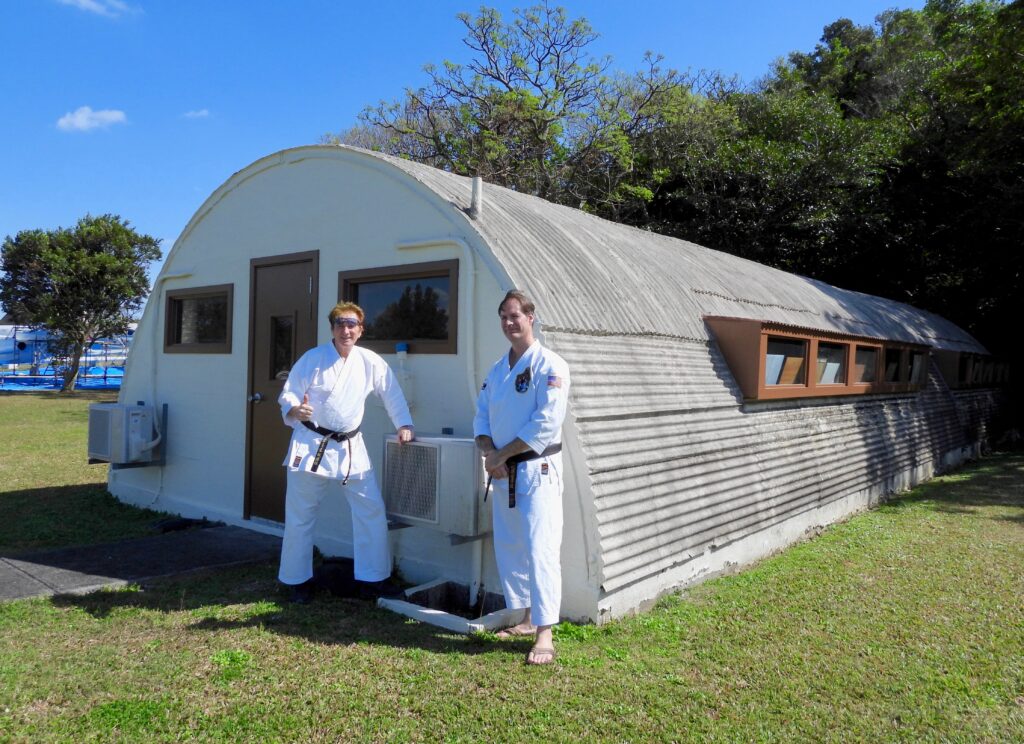
Probably the oldest military Quonset hut in the world (made in 1946).
The reconstruction of Okinawa was done slowly and with the help and sweat from both the occupier and the occupied. Food was scarce and the people very poor. This created links. The boys coming from abroad found themselves alongside strong mature men with bulging muscles and hands covered with frightening calluses. Despite the language barrier, respectful communication was established. It is said that one day, a Master decided to raise the wooden sign of his Dojo which had miraculously survived among the rubble. At the same time, a Jeep with 3 men on board stopped to ask him what this sign meant and gave him a hand. The NCO made a report and the Master was soon proposed to teach his art to the military.
Like many Okinawans, this Master was also a farmer. His fields brought him less than $20/month, and suddenly 10 students were willing to give him $10/month, while continuing to harvest. This situation replicated itself and many Karate Masters saw their lives changed completely and for the better. They were given food for their families and invited on bases. The enemy became a friend and the brotherhood of Karate proved that it is not a myth.
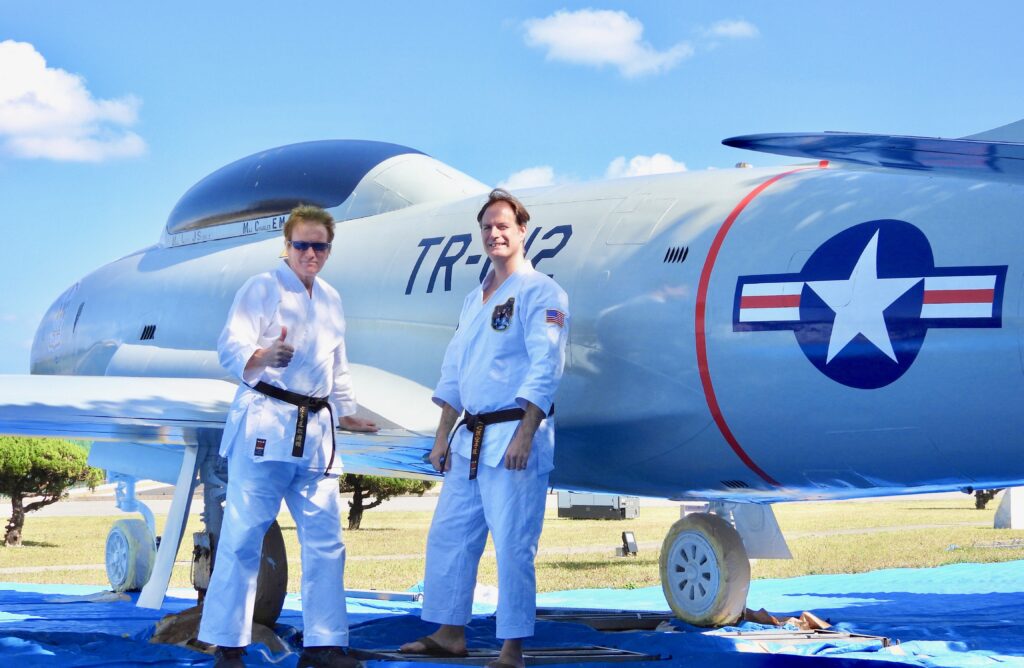
“Top-Gun” Andy; the Isshin-Ryu ambassador on Okinawa.
Teaching Karate became a lucrative activity. At the same time, many other businesses and professions took advantage of this unexpected economic situation. By becoming a U.S. Territory, Okinawa could taste a bit of the “American dream”…
The proliferation of Dojo also motivated the locals to join; especially when the classes were mixed with Americans. Contrary to what we think, Okinawans are not born Karateka… Baseball is still the big sporting winner of the americanization of Japan.
If today, most Dojo are still in operation largely because of the “Gaijin community”, it is not anymore due to the sole American presence. Since about 2 decades, Okinawa has opened wide to the Karateka of the world. Europe, Russia and other countries are discovering Okinawa Karate with avidity.
It is important to know that some mythical Dojo exist within the very heart of the most secret military bases. The classes are provided by excellent American Sensei who are particularly appreciated, as they are the direct disciples of authentic octogenarian American Hanshi, who were Marines trained by Karate-legends. They have been the 1st generation of non-Japanese Karateka, responsible for training the military personnel from the 70’s. U.S. Navy Petty-Officer, Andy Sloane Sensei, 43-year-old, 7th Dan Isshin-Ryu, totals already 30 years of practice and 15 years of teaching on bases. Although he also trains with local Karate celebrities, he remains the faithful disciple of his 10th Dan “Shisho” Ed Johnson, now 82. Andy, who represents this 2nd generation of “Top-Gaijin”, will allow us to enter the largest American base in Southeast Asia. This is the famous Kadena Air Force Base, which is located 634 km (Mu-sa-shi) from the Chinese coast. Its size is 1.3 times that of Tokyo Haneda Airport.
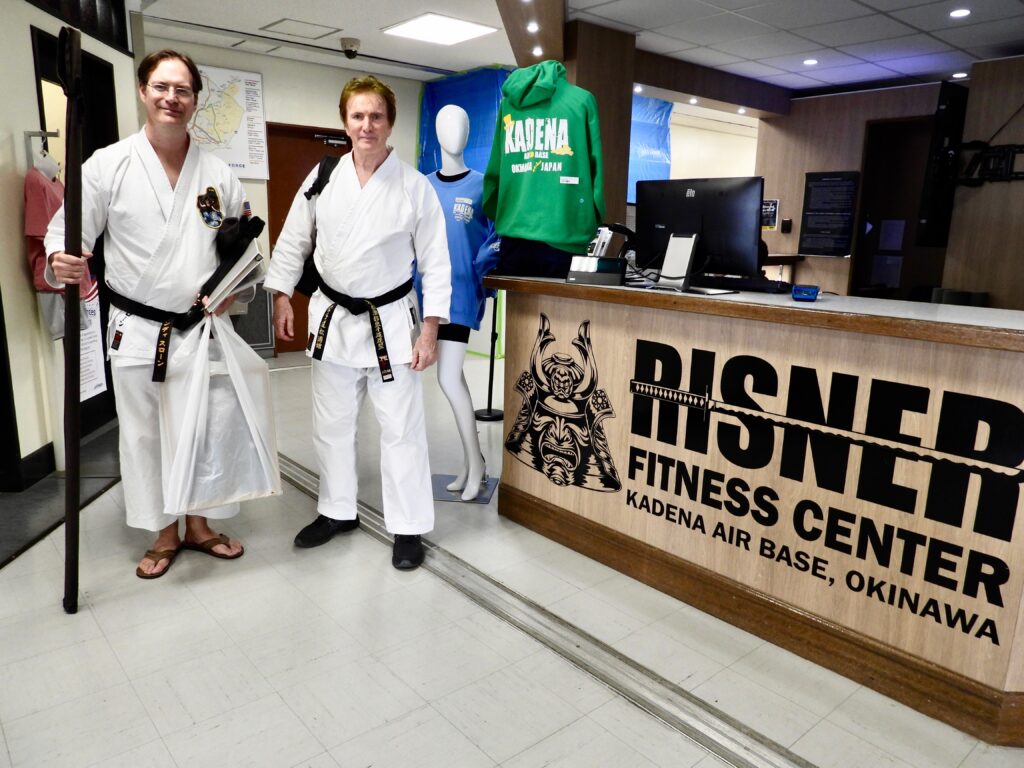
The Dojo is part of the famous “Risner Gym” on Kadena Base.
After passing the security checks which took more than 30 minutes, we are driving our personal cars freely on perfect roads between grassy embankments, tidy houses, restaurants, shopping centers, post-office, banks, etc… This is America! I try to follow Andy closely, who drives without paying attention to the landscape. Suddenly, he shows us a place where we have to leave our car. We climb into his Van and if I were not used to these military procedures, I would expect a bag to be stuck on our heads! Andy treats us with a pilgrimage to the precise place where the armistice of September 7, 1945 was signed. This monument, called the “Peace Garden”, is located at the bottom of an apparently residential area, but inaccessible to the public. Next he takes us to a small treasure located at the edge of a grove. It is the very first “Quonset Hut” built in 1946! These kinds of round-shaped sheds were used for everything during their long career (houses, offices, hospitals, gyms and possibly Dojo…)
We finally reach the beautiful Dojo where Andy has a children and adults class in the afternoon. It is this class that we are authorized to film. Tom Cruise and his “Top Guns” are still at work and we hear them flying above our heads…
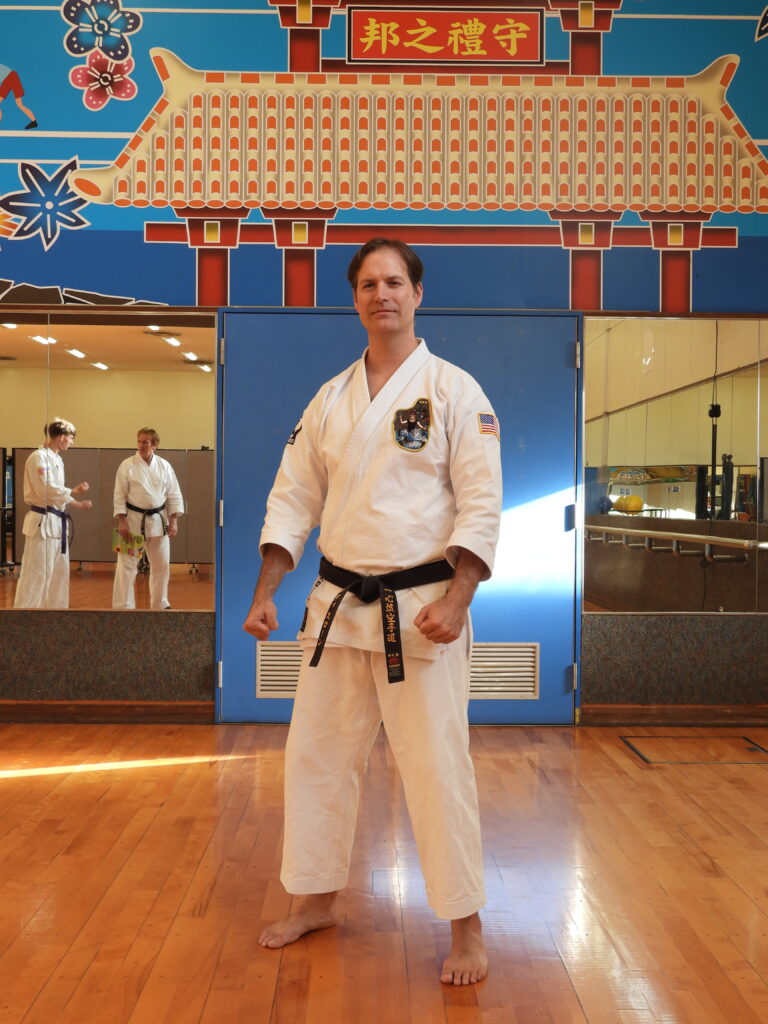
Biography of Andy Sloane
7th Dan Isshin-Ryu Karate, 2nd Dan Taekwondo.
Okinawa Karate historian & Okinawa Isshin-Ryu Ambassador.
Works for the U.S. Navy. Born in 1979 in Louisiana, USA.
Studied Judo from 1991 to 1993. At 14, started Isshin-Ryu under Harvey L. Kennedy Sensei.
In 2000, Andy met and studied under Ed Johnson Hanshi; a first-generation disciple of Shimabuku Tatsuo, the founder of Isshin-Ryu.
Andy is still very close to his Sensei despite the fact that he has been teaching Karate at U.S. military bases around the world for over 15 years.

2 different Gyaku-tsuki; the Isshin-Ryu’s trademark with its vertical fist and the classic from Shorin-Ryu lineage.
-1) -Why did you start karate?
My first memory of karate comes from watching martial arts on TV when I was a child in the late 80’s. “Chuck Norris Karate Kommandos”, the “Mutant Ninja Turtles” and of course, I saw the Karate Kid trilogy. I also enjoyed Jean-Claude Van Damme, Steven Seagal, and Brandon Lee movies. I had the chance to study Judo in middle school (1991-1993). In October 1993, I won a free 2-week membership at a local Karate dojo and I went to try it out. I was immediately hooked and knew I will do it for the rest of my life.
-2) -What are the characteristics of your ryuha?
My primary style is Isshin-ryu karate. The founder, Shimabuku Tatsuo, was primarily a student of Kyan Chotoku, but he also had the opportunity to train briefly with Motobu Choki and Miyagi Chojun. Eventually, Shimabuku took what he felt to be the best elements of both Goju-ryu and Shorin-ryu and combined them with his own unique ideas about blocking and punching. That is why Isshin-ryu features:
A) Exclusive use of the vertical fist punch (tate zuki) with the thumb on top of the fist.
B) A slight recoil to the punch as opposed to leaving the arm extended at the completion of the punch.
C) Blocking with the muscles of the forearms as opposed to using the edge of the bones.
D) Use of a modified sanchin dachi (from Goju-ryu) as its primary stance as opposed to zenkutsu dachi like other Shorin-ryu based systems.
-3)-What is your favorite/best waza/kata?
My favorite kata is Kusanku. It is considered by many Shorin-ryu lineages to be the most advanced kata in karate. It is long, complex, and gives a person a great workout.
If I had to choose a favorite technique, I’d say the mawashi geri even though it is not truly an Okinawan karate kicking technique. I have had great success with the mawashi geri in my sparring matches due to my height, flexibility, and control.
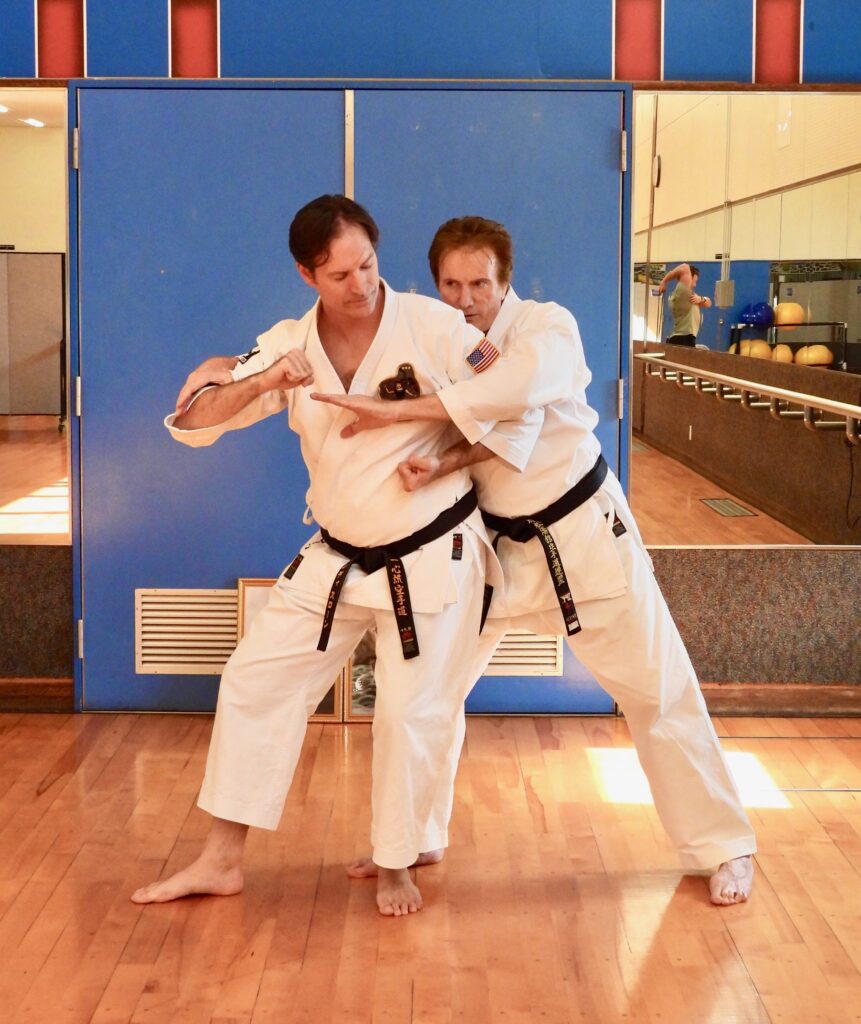
Elbow technique against a grabbing technique.
-4) -What is your most impressive memory of your teacher?
My most impressive memory of my teacher is his conditioning. My sensei was 59 years old when I began training with him and he was still actively working in construction as a bricklayer at that time. Despite his age, he would work long hours on the job site and still teach classes. When he was much younger, in the 1970s, he used to run marathons and was in tremendous physical shape.
-5) -What is the difference between Okinawa karate and mainland karate?
A century ago, the Japanese changed Okinawan Karate into a sport as part of the art being accepted as gendai (modern) Budo like Judo and Kendo. Along with this change, seemingly, came more of a concern for physical prowess, posturing, and displays of fighting ability. Okinawan karate has never been about training for sport but instead about training for real-life self-defense. Okinawans train to make themselves strong and skilled, but they pursue the perfection of themselves through the training. They really don’t use karate to dominate others, per se. Many Westerners, despite being acquainted with Okinawan karate, look to the karate of mainland Japan and take the sporting aspect and seem to believe that one must be a great fighter for their karate to have value. The truth, however, is that the average person has no real desire to be a fighter or really even a tournament competitor. And it certainly doesn’t mean that a person’s karate is no good or has no value if they don’t excel in tournament competition.
Japanese karate seems to care more for using karate as a way to excel in physical contests and displays of athleticism as opposed to the Okinawan mindset of using karate purely for self-defense, body conditioning, and the mastery of oneself through the training.

Andy Sensei holding a nice Yoko-Geri for the photo!

Andy is also a Master in Kobudo and performs with Bo.
-6) -Do you often teach to foreigners?
Since I teach on base, my students are all Americans or American-personnel related. As you know, American people are a mix.
-7) -What do you think about the global popularity of karate today?
I think that it is great that karate is so popular all over the world today. I just wish that many people would care more about how it is actually done in Okinawa instead of the art being so separated from its original lineages in many cases.
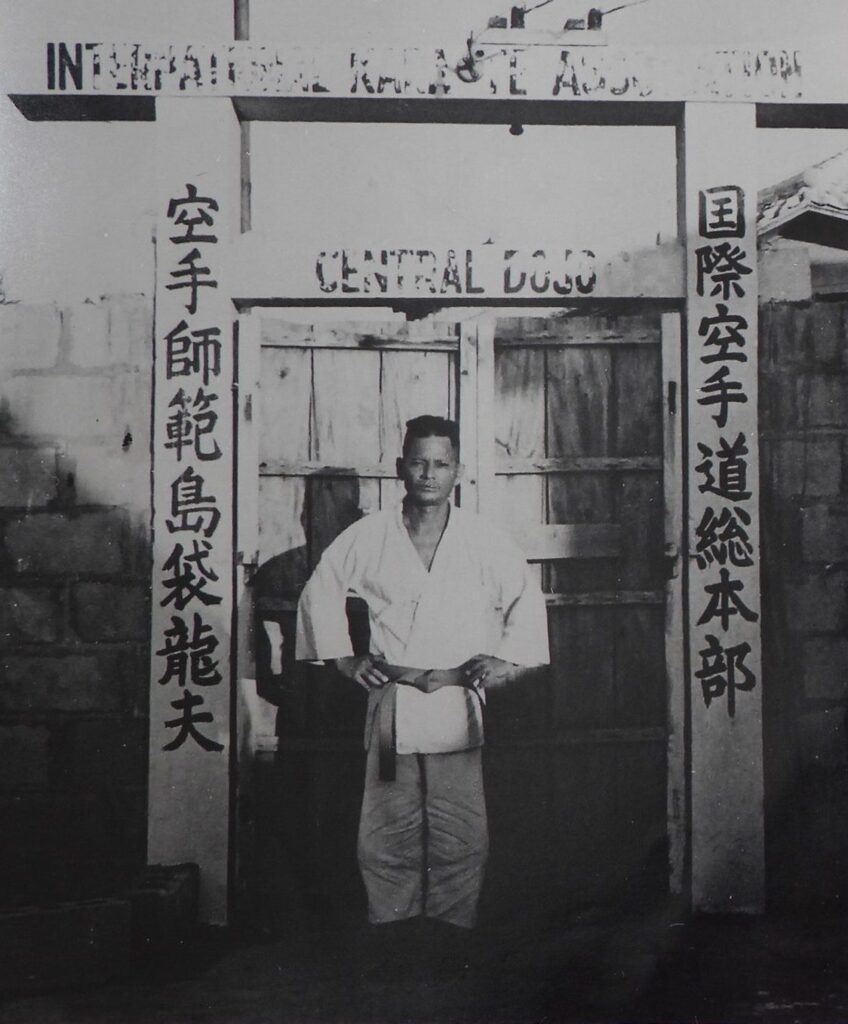
Shimabuku Tatsuo Sensei in front of his Dojo in 1960.
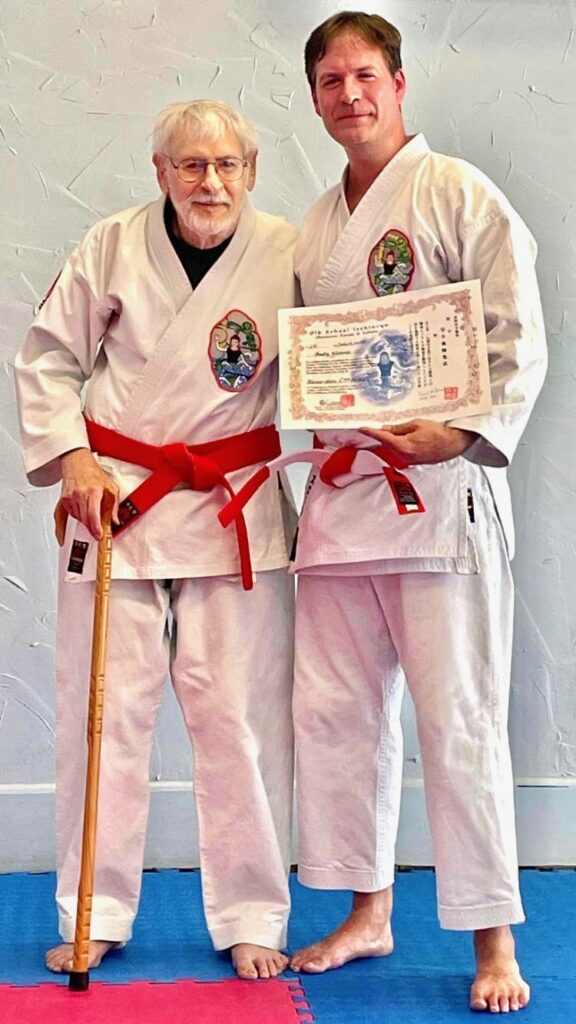
Hanshi Ed Johnson 10th Dan with Andy receiving his 7th Dan (2022).
-8) -What do you think about karate becoming a competitive sport, including the Olympics?
Competition can be used as a tool to gauge your skill level against your peers, but I think too many people focus on the sporting aspect and think that competing is the aim of the art. Though I think karate students should be well rounded in all aspects of karate, I think karate as a sport is detrimental to the image of real karate.
-9) -What is the significance of engaging in karate as a martial art in the current era?
Taking up karate in the current era is something that I think is very important. Sadly, it seems that our world is becoming an increasingly dangerous place to live and I think it is very important for people (young, old, men or women) to be able to protect themselves. Sharing karate with people is also an excellent way to pass down an ancient cultural art form.
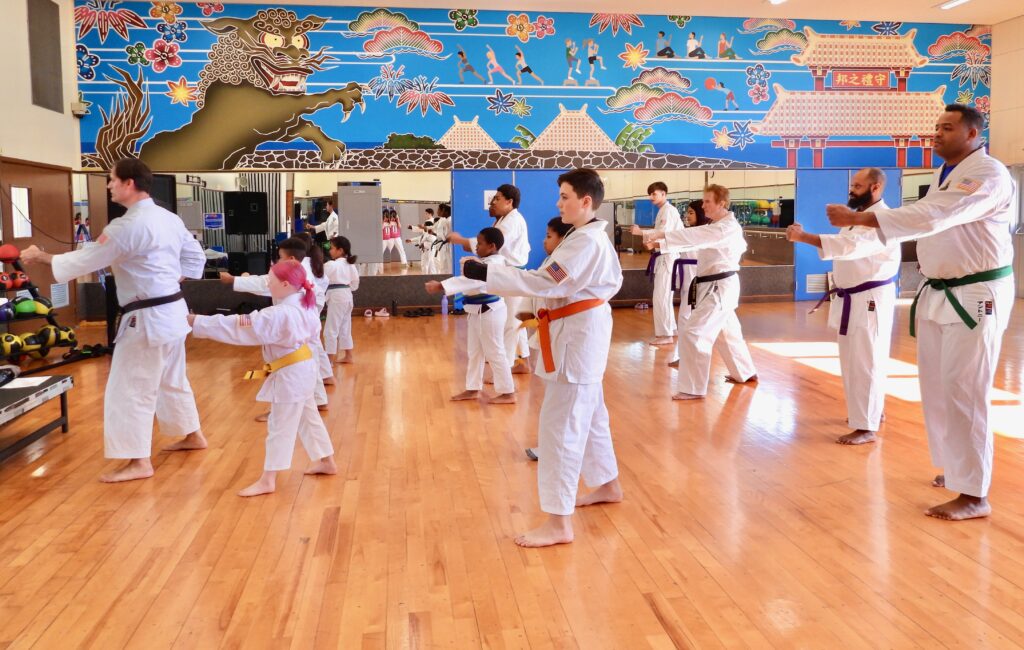
Andy teaching Kihon (Oi-tsuki) in the beautiful and colorful Dojo.

Group photo after class.
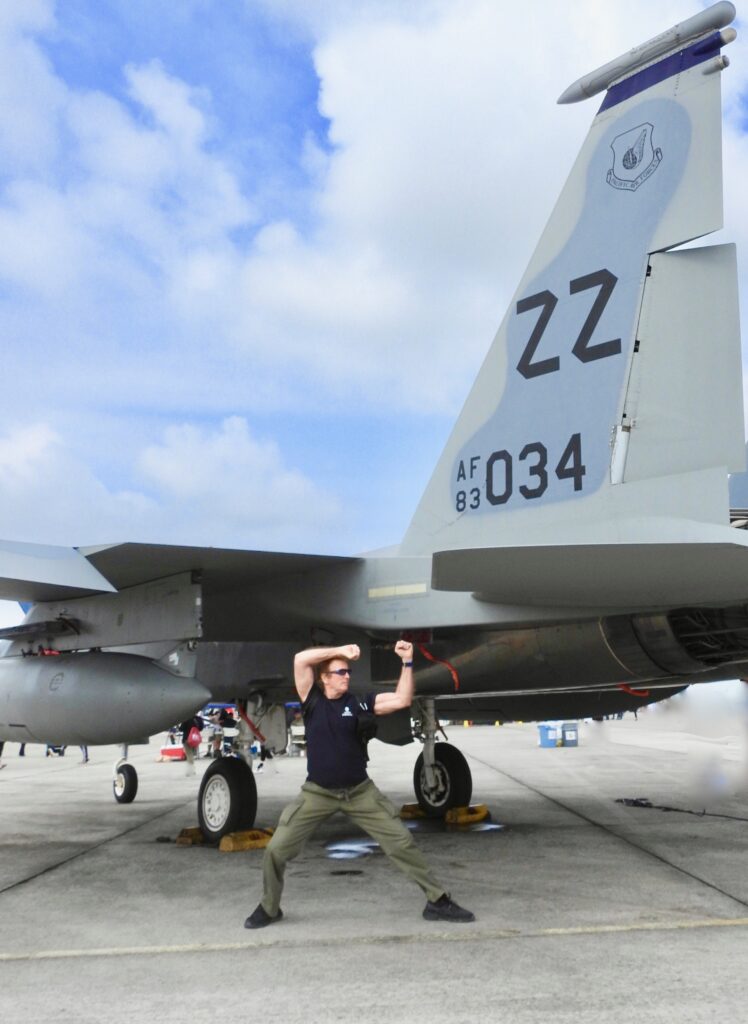
Daniel Sensei doing a Kata under a F-15.
-10) -How do you envision the future of karate?
I think that karate will continue to endure, but I do see things continuing to turn more towards the sporting aspect of karate. Today’s generation doesn’t seem to be as concerned about preserving the arts in as much detail as the older generations, because they either don’t see the value in the training or the arts aren’t being taught correctly in some regards.
-11) -Do you have any message for the world?
Be kind to one another. Be honest and respectful to one another. I think if people had more respect for one another that the world would be a better place. Do your best every day to be a light for the world and to be someone that others can admire and wish to emulate.
-12) -What does karate mean to you? (How would you define karate)
I define karate as being a cross between effective self-defense skills with that of being a vehicle for self-perfection as well as a cultural art form. It is the most effective and practical form of martial arts, in my opinion. Karate-do nourishes the spirit, builds confidence, and physical strength.
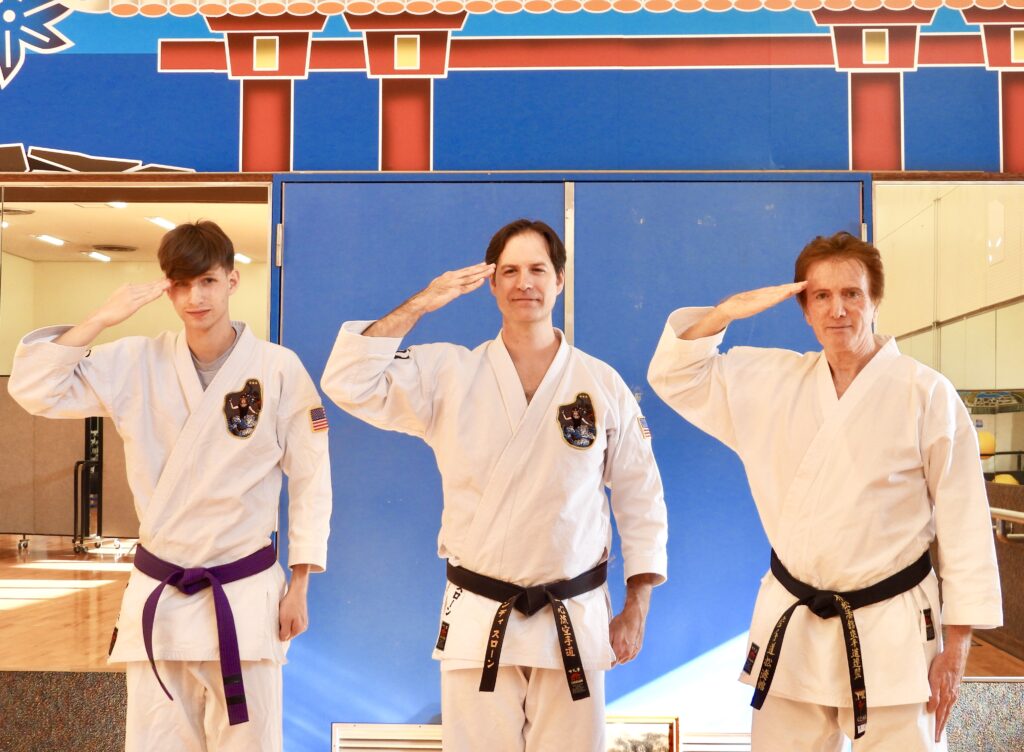
Another type of martial salute.

Daniel Mardon; the Karateka-Therapist
Creator of Aromapressure® method and physiotherapist with a valid US license, Daniel Mardon was born in Paris. One of his specialties is to teach and to perform lymphedema and subcutaneous tissue-damage care, after radiotherapy for cancer patients at medical institutions and subcutaneous tissue-circulation stimulation before and after surgery.
He was also a therapist for two famous soccer teams in Paris. Since 2005, he has focused on producing top-class hotel spas in Japan, as well as physiotherapy education and awareness-raising activities for health care professionals. Author of several books, among his major publications includes “The Physiology and Bodywork of Physical Therapy ” (Published by BAB Japan) and DVD “Daniel Mardon Aromapressure® Method ” (Pony Canyon). He regularly appears on television and radio shows, and has featured in numerous media publications.

